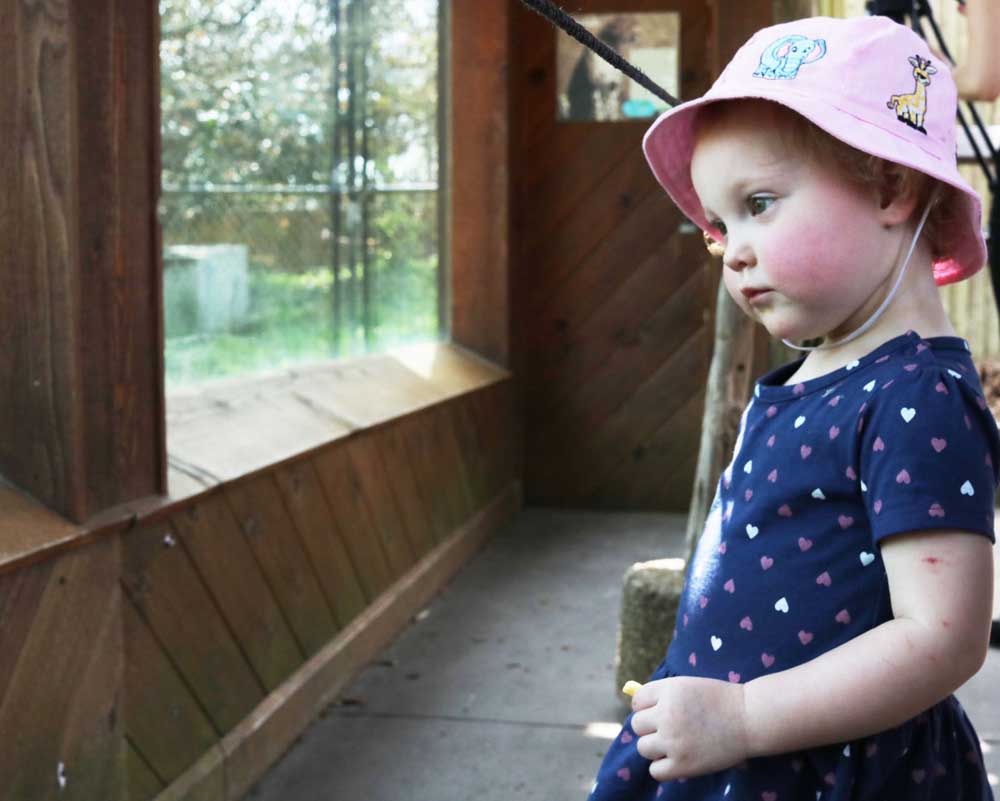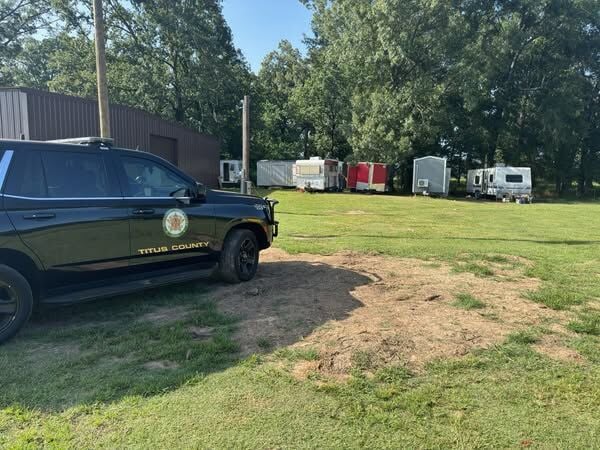A Purrfect Habitat: Cheetah cubs move into their new homes at Caldwell Zoo
Published 6:04 pm Wednesday, March 24, 2021

- Two-year-old Adalyn Johnson looks inside the cheetah cub exhibit on Wednesday, March 24, 2021.
It was a sweet surprise when 3-year-old Gabriella Hale and her mother got to see the new addition to Caldwell Zoo in Tyler on Tuesday — two 5-month-old cheetah cubs.
Their annual trip to the zoo became special when Gabriella gasped as soon as she walked to see the cheetah exhibit.
The two cubs, Leeroy Jenkins and Ichabod, were introduced to their new habitat on Tuesday, right after spring break so they wouldn’t be overwhelmed with the number of people visiting the zoo.
The introduction of their new home was done with tremendous delicacy so that the animals stay comfortable. The zoo selected a relatively quiet day at the zoo to move the cubs, and with the perfect time and temperate weather, the cubs are now settling into their habitat.
“The smiles on (the children’s) faces, they love it. They absolutely love animals and the zoo and I enjoy it, too. I grew up coming to the zoo,” said Gabriella’s mother, Shelbi Hale.
Gabriella dashed around the exhibit to show she could run faster than a cheetah.
“I named them Mia and Meerkat,” Gabriella said. “I love to play with them. I can run like cheetahs but faster.”
After months of careful planning and preparation, Mary Jo, a female cheetah, gave birth to a litter of four cubs Oct. 13 last year after meeting a mate she liked in July. Mary Jo also mothered another foster cub that came from Wildlife Safari in Winston, Oregon. Because cubs don’t do well alone, the cub was transported to the Caldwell Zoo, and Mary Jo raised it as one of her own.
Kubwa, the foster cub, was three to four days younger than her new siblings when she arrived at the zoo. After a while, she couldn’t move and couldn’t see well. She was taken to a specialist in Dallas, where she underwent an MRI. Eventually, Kubwa was humanely euthanized.
The Caldwell Zoo is waiting for results from extensive tests to figure out what happened to Kubwa.
In early January, two of the remaining four cubs got sick with a rare virus zookeepers weren’t expecting, parvo. One of the cubs died and the remaining cub, Lilith, has deformities from inbreeding, which are anticipated to be fixed surgically. For now, Lilith is in the vet wing at the Caldwell Zoo.
Jesse Santee, one of the zoo’s mammal keepers, said cheetahs are not endangered in the wild, but they are threatened.
“There’s only about 7,000 of them left in the wild from around 100,000. Given how they’re inbred in the wild and how their cub mortality rate is so high, along with poaching, the big problem now is cub trafficking into the Middle Eastern countries. They pay a high dollar for the cheetah cubs, so people will go steal the cubs and give them to the people who pay for them,” Santee said. “That’s one of the biggest problems with the cheetahs’ survivability. Not given any drastic changes, cheetahs are in big danger in the wild.”
At the zoo, cheetahs get to lay in the sun and have food brought to them.
“This is important to keep the species around so that other people can see them and learn about them and see what kind of awesome animals they actually are,” Santee said.
Now that Leeroy Jenkins and Ichabod are at the Caldwell Zoo, zookeepers are seeing a great response from the community.
Leeroy Jenkins was named after a character in the video game, “World of Warcraft.”
Ichabod was named after Ichabod Crane, a fictional character from “The Legend of Sleepy Hollow.”
The two were named when they were sick and the names just stuck with them. “They were born in October and close to Halloween, so we were thinking of Halloween type names,” Santee said.
Leeroy is the bigger, fluffier cub of the two, also recognized as the leader. Ichabod is more slender in the face and the neck.
The cubs are on a beef diet and the zookeepers are working on giving them the rest of their vaccinations.
The cubs are expected to fully mature within the next year to year and a half. Leeroy may get to 115 pounds, and Ichabod will be a little lower in weight. They will be fully matured within three years.
The best time to visit the cubs at the Caldwell Zoo is in the morning, when zookeepers will be working with them in their habitat, throwing balls. Early visitors can expect to see the cubs running around. Their nap time is at about 2 p.m., when they’ll lay out, cuddle together and sunbathe, Santee said.






